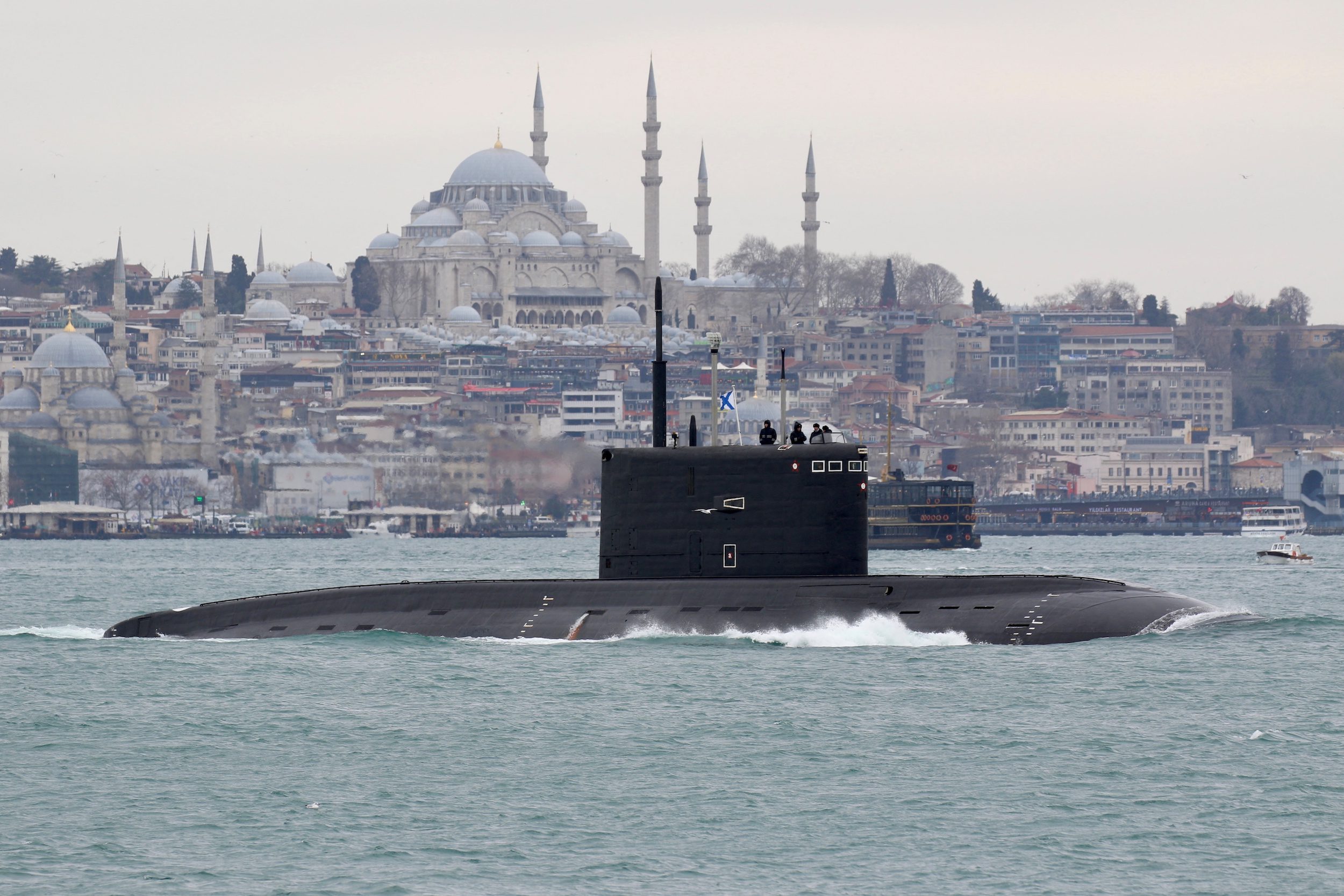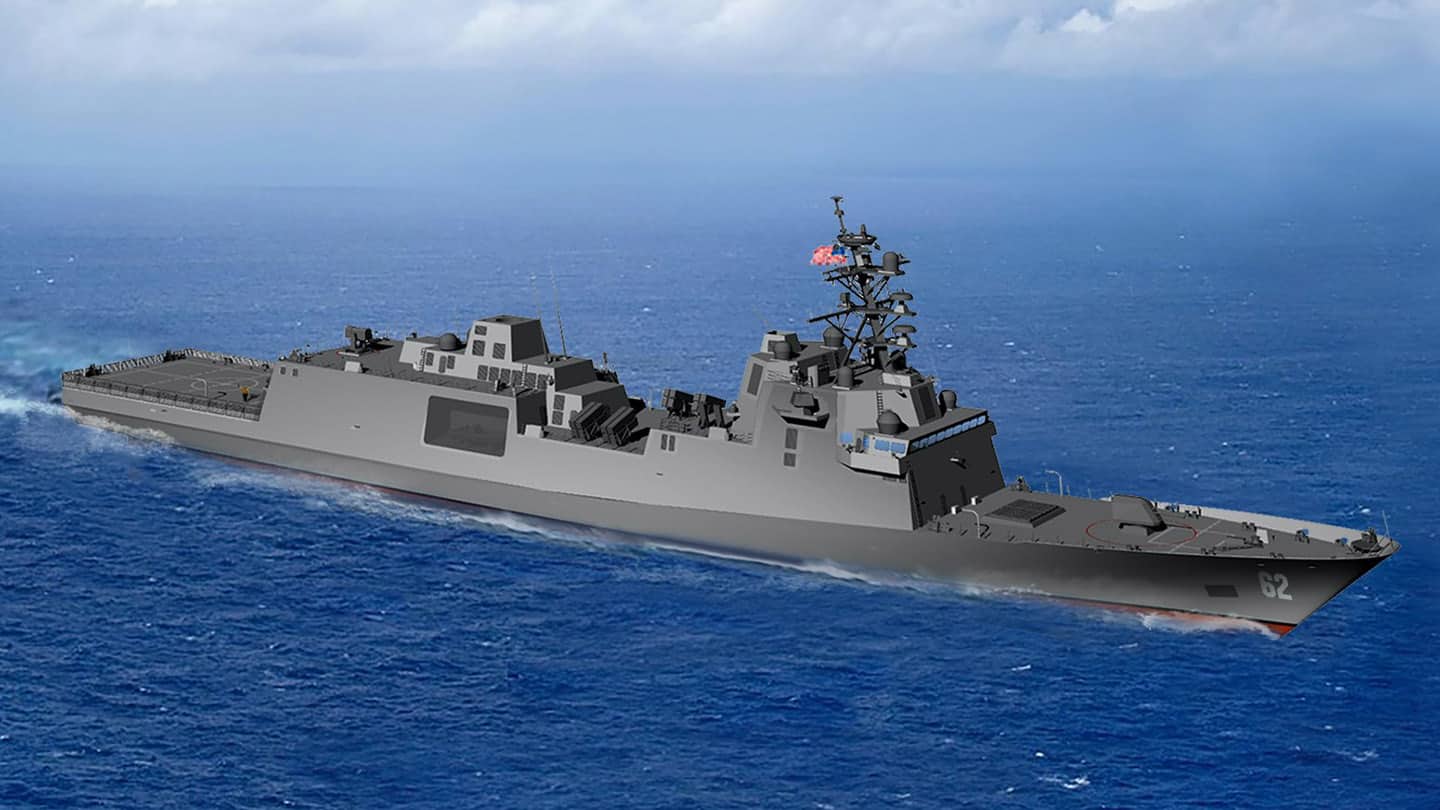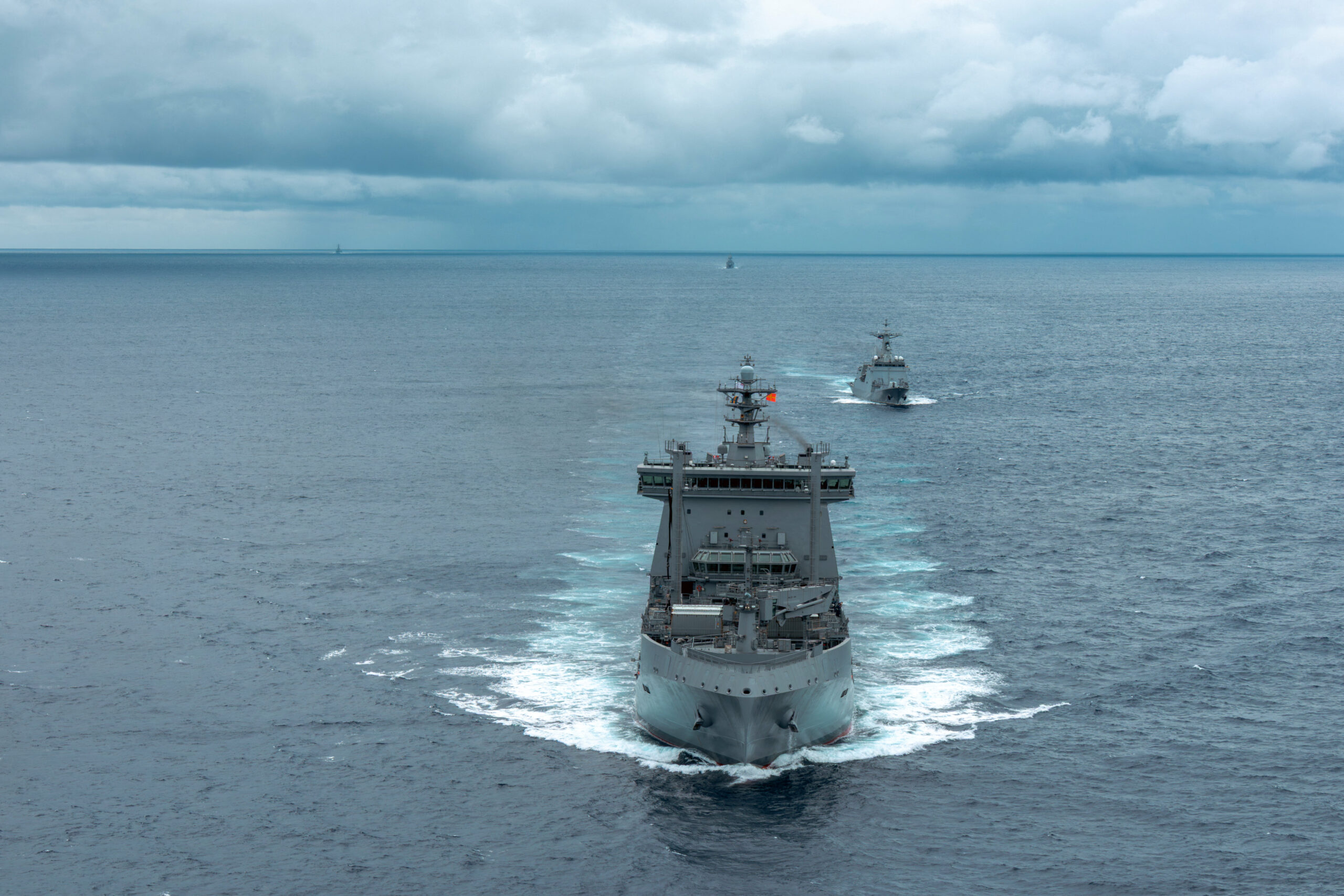by John Konrad (gCaptain) On Friday, President Biden warned that Russia could attack Ukraine “any day now” and “the United States together with our allies and partners will respond decisively.” The stock market sold off sharply, with the Dow Jones dropping more than 500 points. Yesterday morning Russian foreign minister Sergey Lavrov said that his country is open to talks and the stock market responded by rallying hundreds of points… then the market fell slowly throughout the day and evening. This morning stock futures were down until Putin said he would start withdrawing troops. The market responded by opening up 400 points.
I don’t know if Russia will invade Ukraine or not. Nobody does. It is possible that Putin hasn’t even made up his mind. With so much uncertainty why is the Stock Market taking every headline at face value? I don’t know the answer to that either.
What we do know for certain is that Putin’s under no obligation to broadcast the specifics of his invasion plans (or lack of plans) to financial news outlets. In fact, there is a strong incentive for him to act a little crazy.
“Build a reputation for being a little crazy. Fighting you is not worth it. Uncertainty can be better than an explicit threat,” writes master strategist Robert Greene in his bestselling book The 33 Strategies of War. “If your opponents aren’t sure what attacking you will cost, they will not want to find out.”
Politicians lie. Generals lie. That is their job. Any decent General knows that before engaging the enemy he must embrace the “Fog of War“, he must operate in secrecy while doing his best to sew uncertainty and doubt in the opponent.
So how can we find out if Putin will invade Ukraine? We can’t. What we can do, however, is determine if the threat is real. We can do this because – while hackers, politicians, and generals work to create information asymmetry – military logisticians must move actual equipment and materials. While governments may downplay the threat or stoke the flames of war to protect a wide variety of conflicting interests, companies must protect their bottom line.
Commercial Interests
The markets focus on Putin rhetoric because that is what the media focuses on but the smart money follows the commercial interests. “Smart money knows that Putin will lie,” said one Hedge fund manager gCaptain interviewed. “We don’t care what Putin says, we care what Cargill is doing.”
So what are the commercial interests doing?
According to Commitment of Trader data, commercial interests are betting that prices of a number of food, energy, and metal commodities are going to rise. They are very long Oat, Wheat, and Crude Oil as well as smaller markets that Russia controls (e.g. Russia is one of the world’s largest palladium-producing countries).
Meanwhile, Ukraine’s Black Sea ports face declining shipping volumes, according to VesselsValue’s latest figures. Ukraine’s dry bulk exports registered a strong January but trade has dropped off sharply this month and oil exports out of Ukraine are down about 45%. In addition, LPG and ammonia exports are down about 27 percent month-on-month, putting them at the low end of the historical range.
In short, commercial interests are at least preparing for the possibility of war.
Insurance
There is limited opportunity for most insurance companies to change the terms of a policy when a country is on the brink of war. If you own a large building then it’s either covered for war damage, or not (check your policy). Ships however move and marine insurance companies historically have the ability to change terms of a policy when tensions rise.
So what do the professional marine risk adjusters think there is an elevated risk of war?
According to Reuters, the answer is yes. This morning London’s marine insurance market added the Ukrainian and Russian waters around the Black Sea and Sea of Azov to its list of areas deemed high risk as tensions persist in the region, a senior official for the Lloyd’s Market Association said.
Guidance from the Joint War Committee, which comprises syndicate members from the Lloyd’s Market Association (LMA) and representatives from the London insurance company market, are watching the situation closely and providing guidance over insurance “war risk” premiums.
This comes just days after the US Maritime Administration (MARAD) warned U.S. flagged commercial vessels operating in the Black Sea to “exercise caution, conduct a risk assessment, review security measures, and incorporate appropriate protective measures into their vessel security plans.”
Military Logistics
“Whatever else it is, so far as the United States is concerned, it is a war of logistics.” – WWII Fleet Admiral Ernest J. King
War is not like a Tsunami or terrorist attack. It doesn’t happen unexpectedly. Politicians win little, Generals win battles, but logisticians win wars. We can not say it Putin will attack the Ukraine or not but we can determine if he has the heavy equipment and supplies for a full-scale military invasion.
Being ready to wage ware requires the movement of large amounts of men, heavy equipment, and goods. In a logical world, the stock market would ignore anything a politician like Putin says and would react instead to ship movements through the Bosphorus and into the Black Sea.
According to Bosphorus Naval News, this month alone the Russian Navy sent 10 warships into the Black Sea including amphibious assault ships and several ships from its Northern and Baltic fleets. This is a significant move considering the distance between the Baltic Fleet’s homeport of Baltiysk is over 5,500 nautical miles from the Ukraine port of Odesa.
Related Book: 2034: A Novel of the Next World War by Elliot Ackerman and Admiral James Stavridis,
In addition to ships, there are 130,000 troops on the border who require heavy equipment, food, ammunition, and lots of food. That is not only a big military exercise it is a huge logistical endeavor. There are also senior military leaders physically located nearby which, former NATO Commander Admiral James Stavridis, says is a good indication of short term war readiness.
Is The US Ready For War With Russia?
Last week President Biden sent 3,000 troops to Poland. Although this might seem like a lot, it’s less than ten percent of the number of troops the United States has permanently stationed in Germany, and it’s less than one percent the number of troops Russia has stationed on the Ukraine border. Bosphorus Naval News claims that no US or large NATO warships have entered the Black Sea this year and, according to the maritime intelligence experts at Geollect, there are currently zero US-flagged ships of any type (including sealift ships) transmitting their AIS position in the Black Sea.
The US Army and Marines do have assets strategic sealift ships prepositioned for war but there is no indication they have been sent to the Black Sea. “Originally the Marine Corps, through the Navy’s Military Sealift Command, maintained three squadrons of ships which could each offload and support a 16,000-person Marine Expeditionary Brigade anywhere in the world for thirty days,” says maritime historian Sal Mercogliano. “In 2012, Squadron One in the Mediterranean was dissolved, and its assets rolled into the other two squadrons or added to the strategic sealift fleet. These ships could be sent to Europe but would require prolonged transits from their bases at Diego Garcia in the Indian Ocean or the western Pacific.”
Also Read: Why Is The US Merchant Marine So Rusted And Broken?
In short, moving large forces from the continental United States would require the use of government-owned ships held in reserve. Without these ships – plus amphibious warships, aircraft carriers, submarines, surface ships, and hospital ships – in and around the Black Sea – it’s highly unlikely the US could fight any battle “near-peer battle” against Russia.
And it’s not just Mediterranean US Army and Marine supply ships that have been cut from the defense budget, but patrols of the Black Sea itself.
According to Stars and Stripes magazine, the U.S. Navy has shouldered most of the burden for patrolling the Black Sea. The number of days its warships spend annually in the strategic waterway mostly has fallen since 2014, when Kremlin forces seized Crimea from Ukraine.
“It is frustrating to see wavering allied presence in the Black Sea,” said Adm. James G. Foggo III (US Navy Retired), Dean of the Center for Maritime Strategy, at the US Navy League. “The inconsistency (of Black Sea patrols) is driven by competing security priorities among allies, a lack of available ships and resources, and the failure of NATO to devise and implement a strategy in the Black Sea.”
According to the Bosphorus Naval News the last United States Navy warship – USS Arleigh Burke – left the region on December 15th, the French Navy destroyer Auvergne left early this year, and the UK’s Royal Navy hasn’t been in the Black Sea since last summer.
Biden said that if Russia attacks the Ukrain the “United States together with our allies and partners will respond decisively.” By counting ships, however, it’s clear that a decisive military response is not a legitimate option (at least not until we can get a lot more supply and warships ships to the region).
Who can tell us the risk of war.
It’s shocking that Wall Street moved so sharply on the promises of a world leader with a history of lying to the press but also shocking is the fact that markets did not move at all when Russian warships entered the Black Sea.
War requires expertise and logistics. If you want tradable information we suggest you ignore what the politicians are telling CNBC and instead follow logistical experts you trust. Experts like @manintegrated. Then follow the experts in “move really big sh!t”. Experts @gCaptain @MikeSchuler @mercoglianos @loriannlarocco @FreightWaves and then go follow those experts who have real experience in military expeditions. Experts like Admiral @stavridisj, @Admiral_Foggo and the teams at @geollect @cimsec and @USNINews
Also Read: How a Ukraine-Russia Conflict Impacts Shipping
These are the people who count ships and will let you know when/if the United States or NATO allies start moving lots of heavy equipment.

 Join The Club
Join The Club











